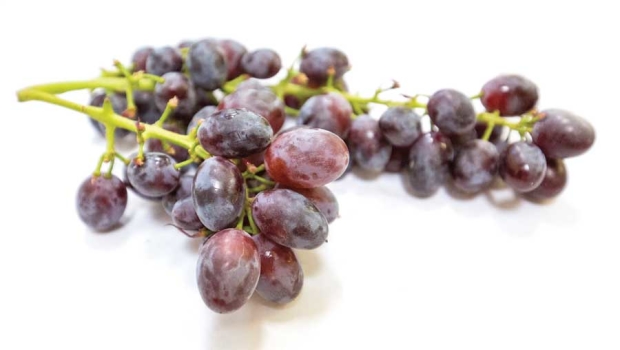
Jupiter grape variety the Washington State Viticulture Field Day in Prosser, Washington on August 13, 2015. (TJ Mullinax/Good Fruit Grower)
Inland Desert Nursery, with just 3.5 acres of table grapes, is likely the largest table grape grower in Washington. Although the nursery’s primary goal in growing table grapes is to supply clean plant material to nurseries and growers, Inland Desert’s Kevin Judkins says table grapes may have potential for commercial growers in the state.
The Pacific Northwest has never been considered a prime location for table grapes.
Traditional table grape varieties are too tender for harsh winters of inland regions of the Northwest, which is why California has a lock on table grape production and grows nearly all of the nation’s table grape supply.
But newer varieties, developed in places like Arkansas and New York, that are cold hardy and disease resistant are helping expand table grape production beyond the Golden State, albeit on a small scale.
Idaho growers have been working since the late 1990s to establish a viable table grape industry in a state that built its agricultural reputation on potatoes.
Table and wine grapes have been found to thrive in the state’s southwestern region known as the Snake River Plain and some believe the area is on the verge of increased table grape plantings. (Read “Elevating Idaho table grapes.”)
In Washington, Inland Desert Nursery grows more than 100 grape cultivars and rootstocks to provide clean plant material to growers and nurseries throughout North America.
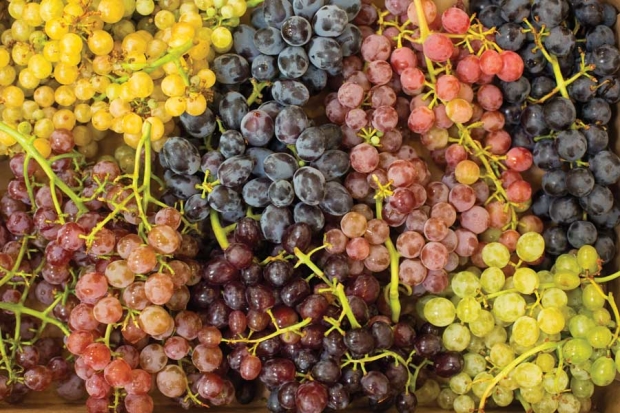
Several table grape varieties on display at the Washington State Viticulture Field Day in Prosser, Washington. (TJ Mullinax/Good Fruit Grower)
The nursery’s plant list relates mostly to wine varietals, but 20 are table grape varieties.
Judkins, president of the Benton City nursery, displayed more than a dozen table grape cultivars during a grape field day held last summer.
The August field day, sponsored by Washington State University and the Washington State Grape Society, was held at WSU’s Irrigated Agriculture Research and Extension Center in Prosser.
“Table grapes have been a consistent piece of business for Inland Desert,” Judkins said, adding that their table grape cuttings and potted vines are sold to garden centers and nurseries throughout the United States and Canada. He believes table grapes grown in Washington could fill niche markets.
Retail nurseries within the state rely heavily on Inland Desert because Washington grape quarantine laws require agricultural officials to inspect grape plant material imported from other states.
Quarantine regulations are designed to protect the state’s grape industry from unwanted pests and diseases not currently found in Washington.
“When Washington State Department of Agriculture officials began checking on grape plant material sold at big box retail nurseries, we became valuable to those businesses because we can provide clean plant material produced within the state that doesn’t need inspection,” he said. (Inland Desert is registered with the state as a certified nursery and undergoes annual state inspections to ensure plant material is free of known grapevine diseases.)
Potential
Judkins sees opportunity for table grapes in Washington, particularly for growers interested in direct marketing, at places like farmers’ markets and u-pick operations.
In the past, Inland Desert supplied grapes to a farmers’ market vendor. These days, Inland Desert sells its table grapes for a dollar per pound to those willing to pick their own fruit. “Between birds and friends, we get fruit off the vines,” he said.
Table grape research trials have not been conducted in Washington, so there is little information regarding which varieties do best and what type of training and trellising is needed.
However, eastern Washington temperatures are similar to those of southwestern Idaho, which has a small, but growing table grape industry.
Judkins has found that some of the varieties they grow are disease resistant and need few, if any, sprays for mildew, a trait he believes could be a benefit for grapes sold at farmers’ markets.
Also, some cultivars are cold hardy and said to survive cold temperatures down to -15°F, although such extreme temperatures have not yet tested his table grapes.
Interlaken, an early-season white seedless variety developed at Cornell University, is the first table grape variety to ripen at Inland Desert. It usually ripens around the end of July.
Another early-season variety is Jupiter, which has blue berries and was developed by the University of Arkansas. Table grape harvest at Inland Desert ends in October with Flame Seedless.
“Washington will never compete with California’s table grape production,” Judkins said. “But for those interested in niche markets, table grapes in the state have potential.” •
– by Melissa Hansen



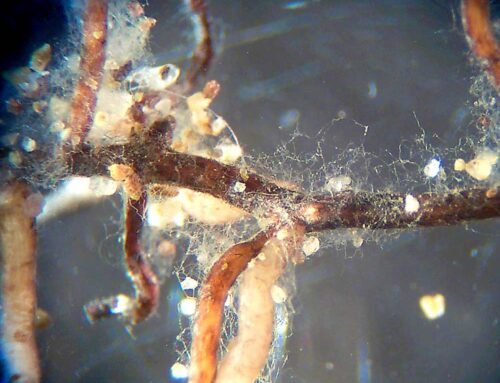
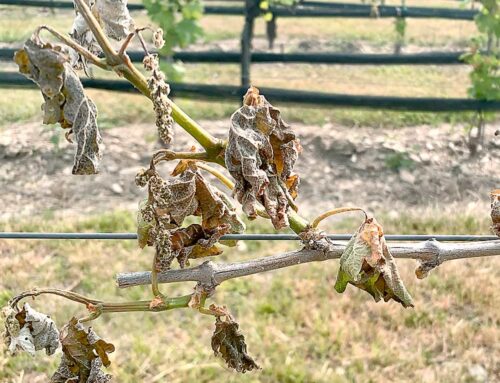
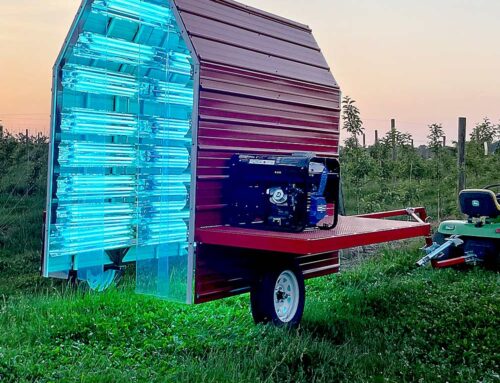
Leave A Comment